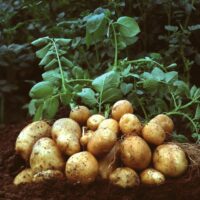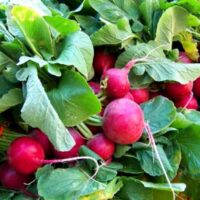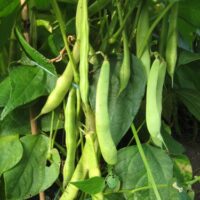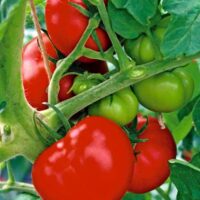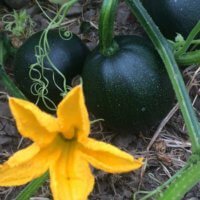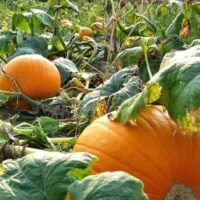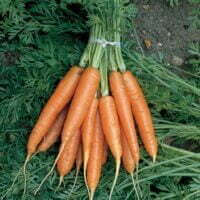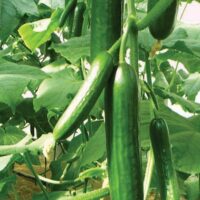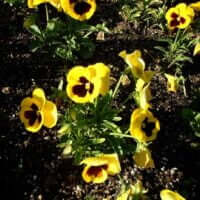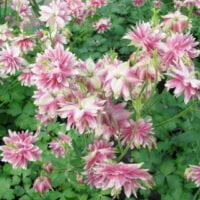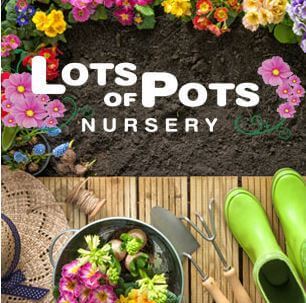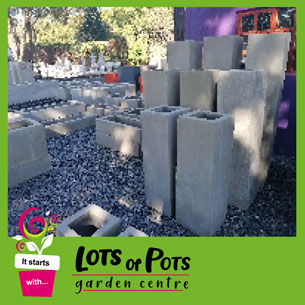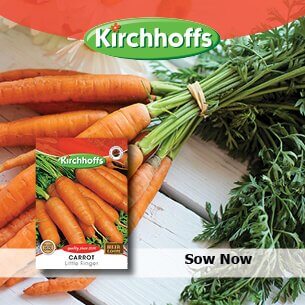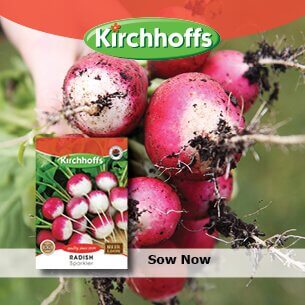It’s time for some last-minute tweaking to get your garden ready for festivities. Gardeners all over are also in a romantic mood, telling us to plant up ‘moonlight gardens’ with white flowers. Others are leaving their beloved paradises behind, but thinking of ways to protect it while they are loafing on a sunny beach.
What to do in your garden during December
Plant and Sow
Now is the time to plant if your garden is to boast during summer,
take the time to research and choose your plants before buying as
it is important to select the right plants for certain situations, positions
and conditions.
Bulbs
- Bulb combinations always ensure a spectacular display.
Plant these bulbs this December:
-
 Bougainvillea cultivars (-)
Bougainvillea cultivars (-) -
 Zantedeschia aethiopica (Arum lily)
Zantedeschia aethiopica (Arum lily) -
 Lilium species (Lily)
Lilium species (Lily) -
 Canna Species (Indian shot)
Canna Species (Indian shot) -
 Tigridia pavonia x hybrids (Mexican shell flower, tiger flower)
Tigridia pavonia x hybrids (Mexican shell flower, tiger flower) -
 Polianthes tuberosa x hybrids (Tuberose)
Polianthes tuberosa x hybrids (Tuberose) -
 Liatris spicata x hybrids (Gayfeather, blazing star)
Liatris spicata x hybrids (Gayfeather, blazing star) -
 Hymenocallis narcissiflora x hybrids (Spider lily)
Hymenocallis narcissiflora x hybrids (Spider lily) -
 Hippeastrum x hybrids (Amaryllis, Christmas flower)
Hippeastrum x hybrids (Amaryllis, Christmas flower) -
 Eucomis autumnalis (Pineapple lily)
Eucomis autumnalis (Pineapple lily) -
 Dahlia x hybrids (Dahlia)
Dahlia x hybrids (Dahlia)
Vegetables to be planted now:
-
 Apium graveolens (Celery)
Apium graveolens (Celery) -
 Solanum tuberosum (Potatoes)
Solanum tuberosum (Potatoes) -
 Raphanus sativus (Radishes)
Raphanus sativus (Radishes) -
 Phaseolus vulgaris (Beans (dwarf/green), French beans)
Phaseolus vulgaris (Beans (dwarf/green), French beans) -
 Lycopersicon esculentum (Tomatoes)
Lycopersicon esculentum (Tomatoes) -
 Cucurbita pepo var. pepo (Gem squash)
Cucurbita pepo var. pepo (Gem squash) -
 Cucurbita maxima (Pumpkins)
Cucurbita maxima (Pumpkins) -
 Lactuca sativa (Lettuce)
Lactuca sativa (Lettuce) -
 Daucus carota (Carrots)
Daucus carota (Carrots) -
 Cucumis sativus (Cucumbers)
Cucumis sativus (Cucumbers) -
 Capsicum annuum var. longum,C. frutescens (Hot peppers)
Capsicum annuum var. longum,C. frutescens (Hot peppers)
Continue sowing salad crops, remember to sow in regular succession to ensure they mature in accordance with harvesting requirements.
What vegetables to sow during December in South Africa?
Here is a comprehensive list of vegetables to sow during December in South Africa
Disclaimer: This guide offers a general overview of vegetables suitable for sowing and planting in December in South Africa. Please note, that sowing and harvesting times may differ based on your specific regional climate and local conditions. It’s essential to adapt your gardening activities to these local factors for the best results. Additionally, the successful growth of these plants depends on proper care and maintenance.
- Artichokes: Plant in well-drained soil and full sun. Start in trays for better control, transplanting them when they’re sturdy. Harvest around 150 days later. Artichokes are the aristocrats of the veggie world, often enjoyed as a luxury dish. They’re not just pretty; they’re ancient, having been cultivated since the Greeks and Romans!
- Asparagus: Begin these perennial favorites in trays. Once established, they can provide spears for up to 20 years! Harvest starts from the second year. Each spear grows so rapidly, you might just miss its journey from the soil to the sky if you blink!
- Broccoli: Direct sow these little green trees in fertile soil. Ready to harvest in about 100-150 days. Did you know broccoli is part of the cabbage family and was enjoyed by the Romans? They’re like mini green umbrellas, offering a canopy of nutrients.
- Brussels Sprouts: Start them in trays before transplanting. They take around 90 days to harvest. These mini cabbages are not from Brussels, but they’ve got a diplomatic passport in the veggie world, often causing debate at the dinner table!
- Bush and Runner Beans: Directly sow these climbers in well-drained soil. They’re ready in 60-70 days. Runner beans are like the Jack’s beanstalk of the vegetable garden, reaching impressive heights with just a bit of encouragement!
- Cabbage: Start in trays for a head start, then transplant. Harvest in about 70 days. Cabbages are like the old souls of the garden, with history dating back to 1000 BC. They’re not just for coleslaw; they’ve been rolling around kitchen histories for centuries!
- Carrots: Sow directly into loose, deep soil for those straight roots. They take about 70-80 days to harvest. Carrots were originally purple or white. The orange ones? A relatively modern makeover!
- Cauliflower: Plant these cloud-like veggies in trays first, then into the garden. They take about 80 days to harvest. Cauliflowers are the chameleons of the veggie world, able to transform into rice, pizza crust, and even steak!
- Cucurbits: Sow these sun-lovers directly in warm soil. They take about 50-70 days. They’re the veggie gymnasts, flexible enough to be sweet or savory, and they come in an array of shapes and sizes, from tiny cucumbers to giant pumpkins!
- Egg Fruit: Direct sow in rich soil. Ready in about 70 days. Egg fruits are the mystery novels of the garden. When cut open, they reveal an egg-like interior, but their story is all about taste and nutrition.
- Leeks: Start in trays, then move to the garden. Harvest in about 100 days. Leeks are the understated aristocrats of the onion family, with a flavor that’s subtly sophisticated.
- Lettuce: Plant these leafy greens directly in the soil. They’re ready in 45-60 days. Lettuce has been around since the time of the Egyptians, and it’s not just for salads – the ancient Greeks used it as a sleep aid!
- Melons: Sow these beach balls of the garden directly in the soil. They take about 80-90 days. They’re not just a sweet treat; in medieval times, they were served as a course between meals to cleanse the palate!
- Mustard: Sow these spicy greens directly in the soil. They’re ready in just 30-40 days. Mustard plants are the sprinters of the garden, and their seeds are a global condiment superstar.
- Peppers: Start these colorful gems in trays, then transplant. They take about 60-90 days. From sweet bell to fiery chili, peppers are like the spice rack of the garden, offering a range of flavors from around the world.
- Pumpkins: Sow these Cinderella favorites directly in the soil. They take about 90-120 days. Pumpkins are the fairy tale stars of the garden, ready to transform into pies, carriages, or spooky lanterns!
- Radishes: Directly sow these zesty orbs. Ready in just 25-30 days. Radishes are like the underground fireworks of the garden, bursting with color and spice.
- Rhubarb: Plant in spacious beds; it’s a long game, taking 1-2 years for the first harvest. Rhubarb is a vegetable in a fruit’s disguise, often baked in pies and crumbles!
- Sweet Corn: Directly sow these golden rods. They’re ready in about 60-100 days. Each kernel of corn is a potential plant, making every cob a potential field!
- Spinach: Sow these iron-packed leaves directly in the soil. Harvest in about 40-50 days. Spinach is not just strong; it’s smart, with researchers using its leaves to develop plant-based heart tissue!
- Tomatoes: Start these juicy fruits in trays, then transplant. Ready in 60-80 days. Tomatoes are the celebrities of the plant world, playing roles in salads, sauces, and sandwiches!
- Turnips: Direct sow these underground treasures. Harvest in about 60 days. Turnips have been turning up in cuisines for over 4000 years, making them a timeless classic in the root world.
- White Maize: Sow these kernels directly in the soil. Harvest in about 90-110 days. White maize is the unsung hero of many traditional dishes, standing tall and proud in the fields.
- Beetroot: Directly sow these ruby jewels. Ready in 50-70 days. Beetroot is the natural painter of the vegetable world, turning everything it touches a vibrant red.
- Sweet Potatoes: Start with slips in the soil. They’re ready in about 90-170 days. Sweet potatoes are like the dessert at the vegetable party, sweet, comforting, and always welcome.
- Celery: Start in trays, then transplant. Takes about 130-140 days. Celery is the crunchy, watery snack that can also be a flavor powerhouse in soups and stews.
- Courgettes (Zucchini): Direct sow these fast growers. Ready in 40-60 days. Zucchinis are the magicians of the garden, astonishing everyone with their ability to grow from tiny to tremendous overnight!
Annuals
- Planting up a border en masse never ceases to amaze.
- Remember to keep the rest of our garden in mind when selecting a colour scheme.
- Summer annuals look great in both mixed and mono-coloured boarders and can even be used to create a focal point around containers and focal or specimen plants.
Some of the bedding plants to be planted now from seedling trays:
-
 Tagetes erecta (Marigold, african marigold)
Tagetes erecta (Marigold, african marigold) -
 Cosmos bipinnatus (Cosmos)
Cosmos bipinnatus (Cosmos) -
 Cleome Senorita Blanca (Cleome Senorita Blanca)
Cleome Senorita Blanca (Cleome Senorita Blanca) -
 Celosia argentea (Celosia, cock’s comb)
Celosia argentea (Celosia, cock’s comb) -
 Begonia semperorens (Bedding begonia)
Begonia semperorens (Bedding begonia) -
 Vinca minor ‘Atropurpurea’ (Red periwinkle)
Vinca minor ‘Atropurpurea’ (Red periwinkle) -
 Lobelia anceps (Angled lobelia)
Lobelia anceps (Angled lobelia) -
 Dahlia x hybrids (Dahlia)
Dahlia x hybrids (Dahlia) -
 Impatiens x ‘New Guinea’ hybrids (Impatiens)
Impatiens x ‘New Guinea’ hybrids (Impatiens) -
 Viola wittrockiana (Pansy)
Viola wittrockiana (Pansy)
Shrubs and Perennials
All of these perennials can be sown in trays during December:
-
 Nepeta cataria (Catnip)
Nepeta cataria (Catnip) -
 Aquilegia vulgaris ‘McKana’ (Granny’s bonnet)
Aquilegia vulgaris ‘McKana’ (Granny’s bonnet) -
 Viola odorata (English violet , sweet violet)
Viola odorata (English violet , sweet violet) -
 Lobelia cardinalis (Cardinal flower)
Lobelia cardinalis (Cardinal flower) -
 Alcea rosea (Common hollyhock)
Alcea rosea (Common hollyhock) -
 Begonia Species (Begonia)
Begonia Species (Begonia) -
 Penstemon species (Penstemon species)
Penstemon species (Penstemon species) -
 Physostegia virginiana (Obedience plant)
Physostegia virginiana (Obedience plant) -
 Symphyotrichum novi-belgii (New York aster, Michaelmas daisy)
Symphyotrichum novi-belgii (New York aster, Michaelmas daisy) -
 Rudbeckia hirta ‘Marmalade’ (Gloriosa daisy)
Rudbeckia hirta ‘Marmalade’ (Gloriosa daisy) -
 Limonium perezii (Sea lavender, Giant statice,)
Limonium perezii (Sea lavender, Giant statice,)
General Garden Maintenance
- For a longer blooming season, deadhead and feed your roses regularly and remove faded blooms from poppies, pansies and other annuals.
- Start mowing the lawn regularly, feed once a month and water during dry weather.
- Remember to deadhead annuals and bedding plants regularly and feed every 2 weeks or so with diluted liquid fertilizer.
- Water and feed hardy summer-flowering annuals regularly.
- Continue to remove weeds from lawns and pavings.
- Remember to water lilies once a month.
- Feed your lawn every 4 to 6 weeks with a slow-release fertiliser that won’t burn the lawn.
- Mow the lawn at least once a week. Remember to change the direction in which you mow often. This will prevent ridges and uneven growth.
- Water the lawn in the early morning so that it can dry out by the evening.
Bulbs
- Continue watering dahlias, feed daylilies and liliums with a general fertilizer.
- Water irises regularly and apply a dressing of superphosphate.
- Now is the time for winter-flowering bulbs to be lifted and stored.
- Don’t let your summer flowering bulbs dry out, water them at least once a week.
- Cannas should be fed once a month. Water them well once a week
- Dahlias should be fed once a month with a liquid fertiliser. To discourage red spider mites, hose down the foliage. Remember to stake Dahlias as they grow.
- Liliums must be kept well-mulched. This keeps the roots cool and improves moisture levels. Feed them once a month with liquid fertiliser and tie the growing stems to firm stakes for support.
Pruning
- Annuals, Roses, and perennials like geraniums, daisy bushes and lavender need to be deadheaded regularly to promote growth and encourage flowering. Phlox and catmint also respond well to deadheading. Remember to de-bud Dahlias at regular intervals.
- Climbers like Wisteria, Jasmine and Petrea can all be cut back neatly into shape.
- Hedges, standards or “lollypops”, screens and topiaries need to be pruned regularly to keep them neat and in shape.
- The Jasmine, wisteria and other flowering creepers should be flourishing. Cut and neaten these beauties back once the blooms have faded, as this will promote new vigorous and stronger growth.
- Cut back, neaten and clean out hedges. Remember to add offcuts to the compost heap.
- Prune and shape vines.
- Remove dead, diseased and damaged wood from deciduous trees and shrubs.
Pest and Disease
- This time of year provides perfect environmental conditions which inevitably see the emergence of pests and disease, so it is important to take a regular stroll through the garden and check the succulent fresh new growth of your ornamentals and pot plants for signs of mildew, aphids, thrips, red spider mites and other buggers. Treat them in time to avoid over infestation and remember to use pesticides responsibly.
- Keep an eye out for the tiny little caterpillar eggs or baby caterpillars on your amaryllis and clivias and the underside of cabbage and kale leaves.
- Treat conifers with Aphicide if cypress aphids are still present.
- Powdery mildew may become a problem as damper conditions creep in.
- Keep an eye out for the amaryllis caterpillar (lily borer).
- Red spider could start appearing now, so the undersides of leaves and treat accordingly.
- Snails and slugs will also be present now. Scatter snail bait after watering.
- Only spray where necessary to keep the garden free of pests. – There are a number of organic products and remedies available.
- Treat fruit trees for pests with a spray. Remember to spray your roses and affected ornamentals as well as many of them harbour pests which attack fruit trees. Particularly spray Pyracantha and quince.
- Spray regularly where necessary to keep the garden free of pests. – There are a number of organic products and remedies available.
- Red spider mites love the hot dry weather so keep a close eye throughout the garden – they tend to gather on the undersides of foliage and can be treated with a spray of cold water when present in smaller numbers.
- Keep an eye out for dollar spot on the lawn.
- Mildew also tends to be a problem now (especially on Zinnias) spray if necessary.
- Amaryllis-borer caterpillar is a persistent problem on Clivias, Amaryllis, Zantedeschia, Agapanthus and nerine so squish these black and yellow striped terrors on sight.
Weeds
- The weed war will continue at full force during December so remember to weed before the flowers are formed and seeds are set and don’t put weeds on the compost heap.
- Remove weeds from the lawn by applying a broad-leaf weed-killer, weeds in the garden bed are best removed by hand before they flower and set seed.
- Minimise weeds by applying mulch and weed guard or landscape fabric and refrain from turning or “cultivating” the soil.
- Treat weeds in the driveway and paving with boiling water on a hot day, remove them by hand make use of a number of no- selective weed-killers available on the market. – avoid spraying on windy days and strictly follow the dosage and package instructions.
Feed and Fertilize
- Container plants always benefit from good fertilization round about now. Always water before fertilizing and remember it is often easier to feed pot plants with a liquid fertilizer opposed to a granular.
- Now is also a good time to feed your hedges to stimulate aggressive thick and dense new growth to be pruned in to shape during the next few months.
- Continue to fertilize fruit trees and checked that they are well mulched, water them regularly.
- Feed shrubs, trees and climbers and mulch well.
- Feed flowering annuals every 14 days with a water-soluble fertilizer like Nitrosol or Multifeed.
- Freshen up vegetable beds with fresh compost and organic fertilizer, after harvesting your vegetables and herbs.
- Liquid fertiliser can be applied every 14 days or so to encourage a heavy yield
- Leafy vegetables like spinach and lettuce can be fed with 2:3:2 or a liquid plant food like Multifeed Classic.
- Summer and Spring flowering bulbs can be fed with bulb food and should be kept moist, but not overwatered.
- A dose of 3:1:5 would do your summer-flowering bedding plants well.
- Continue to feed Annuals with a liquid fertilizer every second week.
- Feed all Citrus trees with granular fertilizer, start spreading the granules at least 10cm away from the base and continue right up to the drip line of the canopy.
- Feed your Cannas, Daylilies, Hibiscus and Dahlias with 3:1:5 and for a really spectacular show work in some manure and mulch they well with some compost.
- Feed the Camelias with +- 30 grams of Epsom Salts diluted in 5 litres of water and applied as a liquid fertilizer.
- Feed the Roses well with granular fertilizer such as 8:1:5 to promote new growth and encourage flowering. – Feed once a month now trough to May.
- Hydrangeas are in full bloom and do best with a water-soluble fertilizer once every two weeks or a good dose of Hydrangea plant food – choose one relevant to the flower colour and soil pH.
- Feed the lawn well with granular fertilizer and water well.
Watering
- Combat the severe heat and drought of December by ensuring the garden is well mulched over this period of the year.
- Mulch is an organic material which is spread over exposed garden soil in a 5cm-10cm thick layer, it reduces evaporation, suppresses weeds, improves soil temperatures and nutrient levels and dramatically improves the visual appeal of the garden.
- Water the entire garden well during dry periods and pay special attention to water the roses nice and deep at least once a week.
- Keep your Agapanthus which are now in full bloom well watered for a really spectacular show.
To minimize your gardens water requirements:
- Refrain from watering during mid-day.
- Water thoroughly and deep at less frequent intervals rather than a quick splash on a more regular basis.
- Though it is often tempting remember not to turn or “cultivate” the soil as this invites evaporation and stimulates weed seed germination.
- Consider putting up a rainwater tank this rain season, as a wide variety of vegetables and container-grown plants give best results if watered with rainwater.
- Keep the garden well mulched.
Indoor plants
- Turn your indoor plants and containers 180 degrees to ensure the grow upright and don’t lean towards the light source, at the same time check the bottom of the container for nesting ants, give the foliage a quick wipe, water well and tuck some fertilizer in the top layer of soil.
- When you water indoor plants make sure the water is room temperature.
- With a wet cloth or sponge, gently wipe and dust the leaves every two weeks or so.
- It’s best to keep your indoor plants away from draughts moving through the room.
- Primulas, cyclamen and cinerarias make great indoor plants, these can be fed once a week and require slightly more water than other now dormant indoor plants.
- Single and double-flowered begonias as well as flowering Kalanchoes should also be available now.
- Avoid getting water on the foliage of African Violets.
Mulching
Mulch the entire garden well, avoid mulching up against the base of your plants.
Mulching will prevent the soil from losing moisture on hot days in the warmer regions. Mulch is also great for suppressing weed growth.
Propagation
- Take softwood cuttings of and treat with a softwood rooting hormone, firm into a well-drained sterile media and water with a fungicide.
Lawn
- Slightly raise the mowing height of your lawnmower as the drought, winds and heat of January could lead to the lawn scorching, burning and drying out as a result of too short mowing.
- Feed the lawn every 6 weeks or so with a handful of granular fertilizer spread evenly per square meter – water thoroughly after every application.
- Mow bunch type and finer leaved lawns once a week, Kikuyu looks and performs best when mowed twice a week.


















